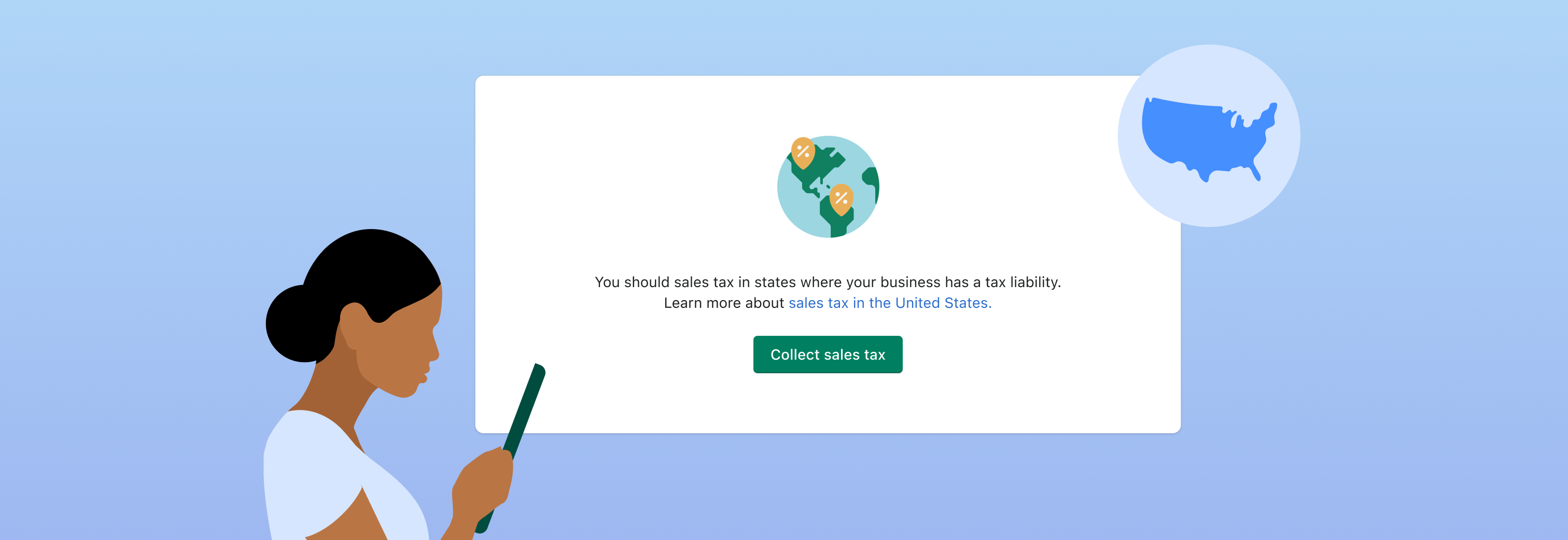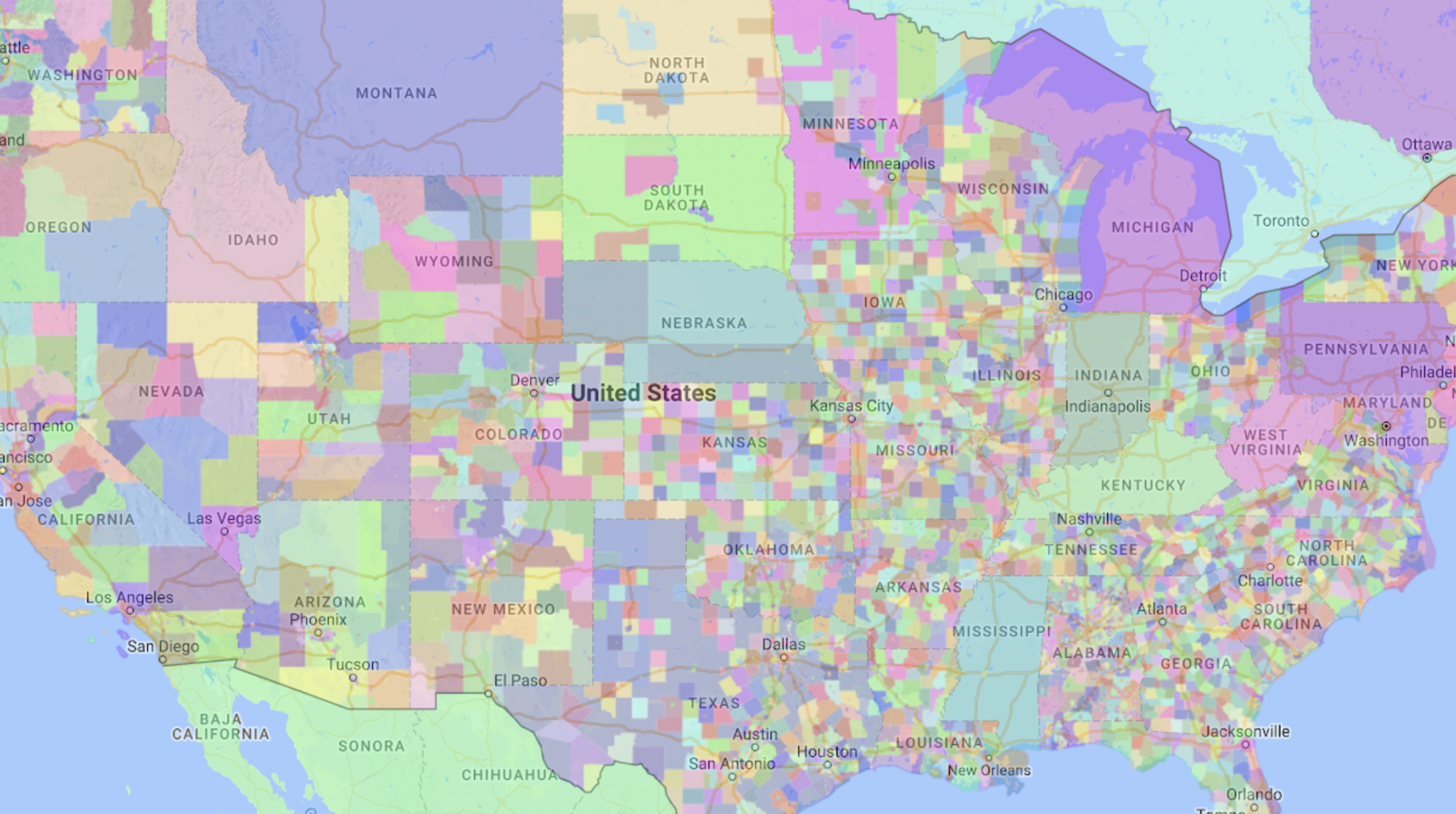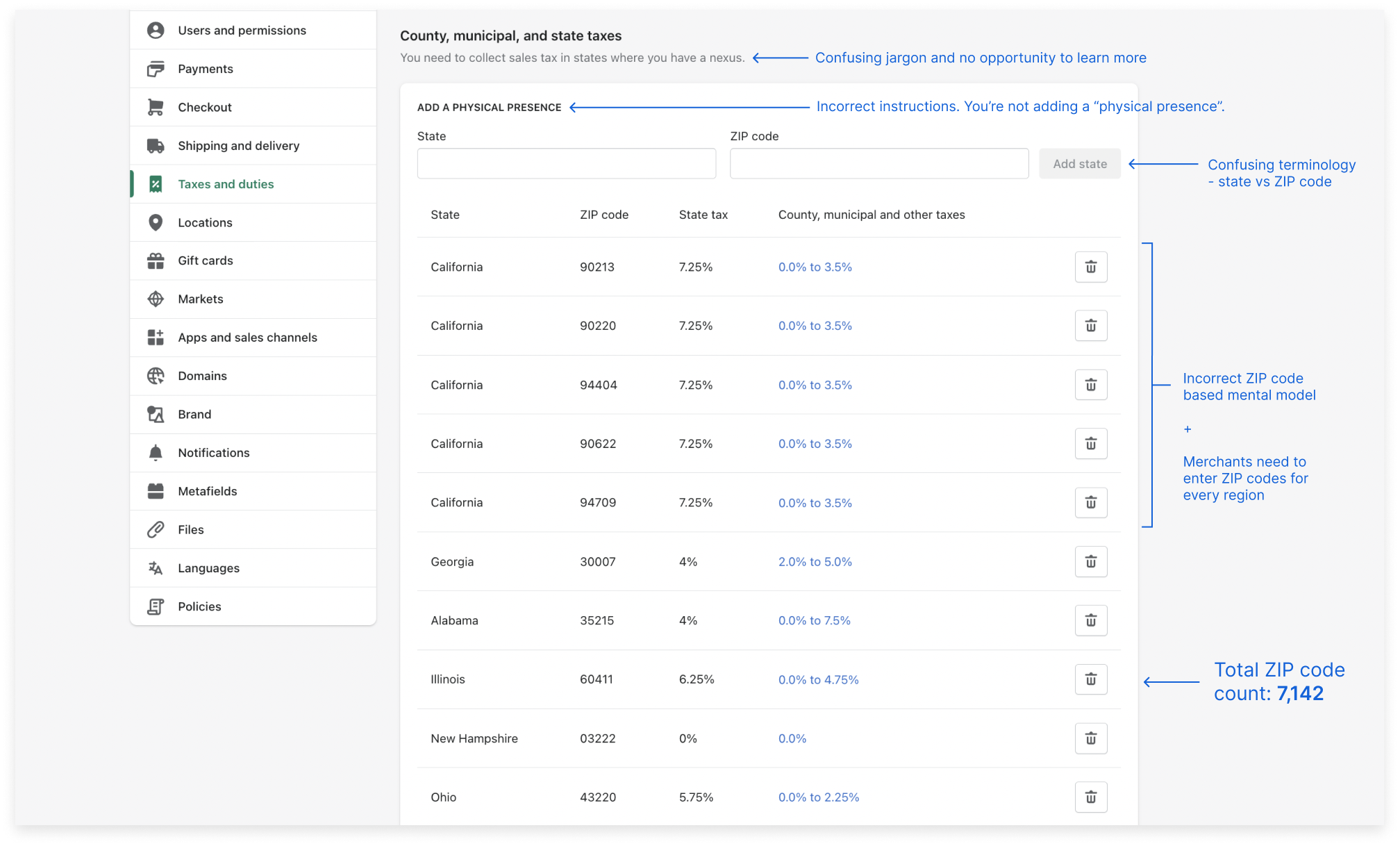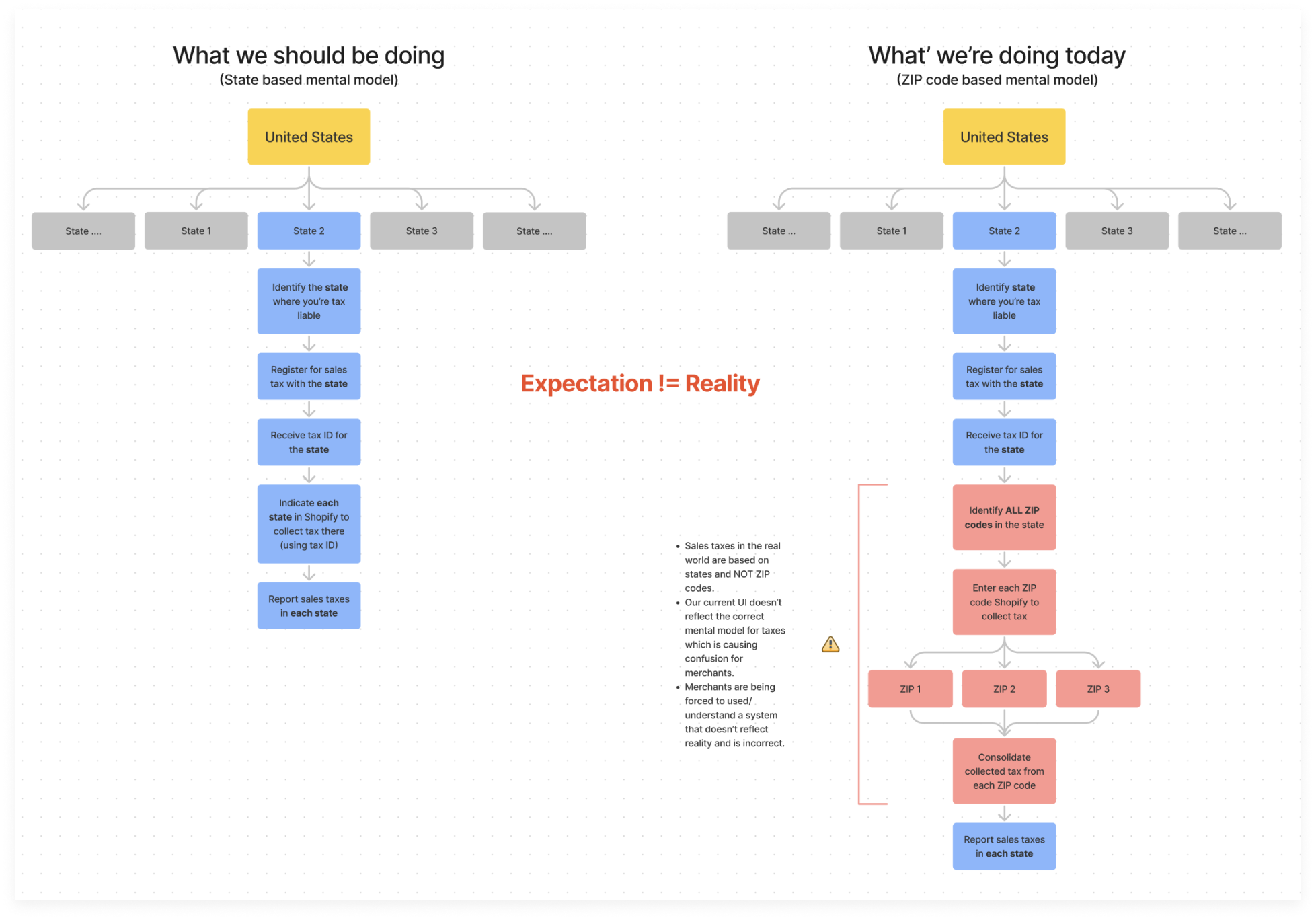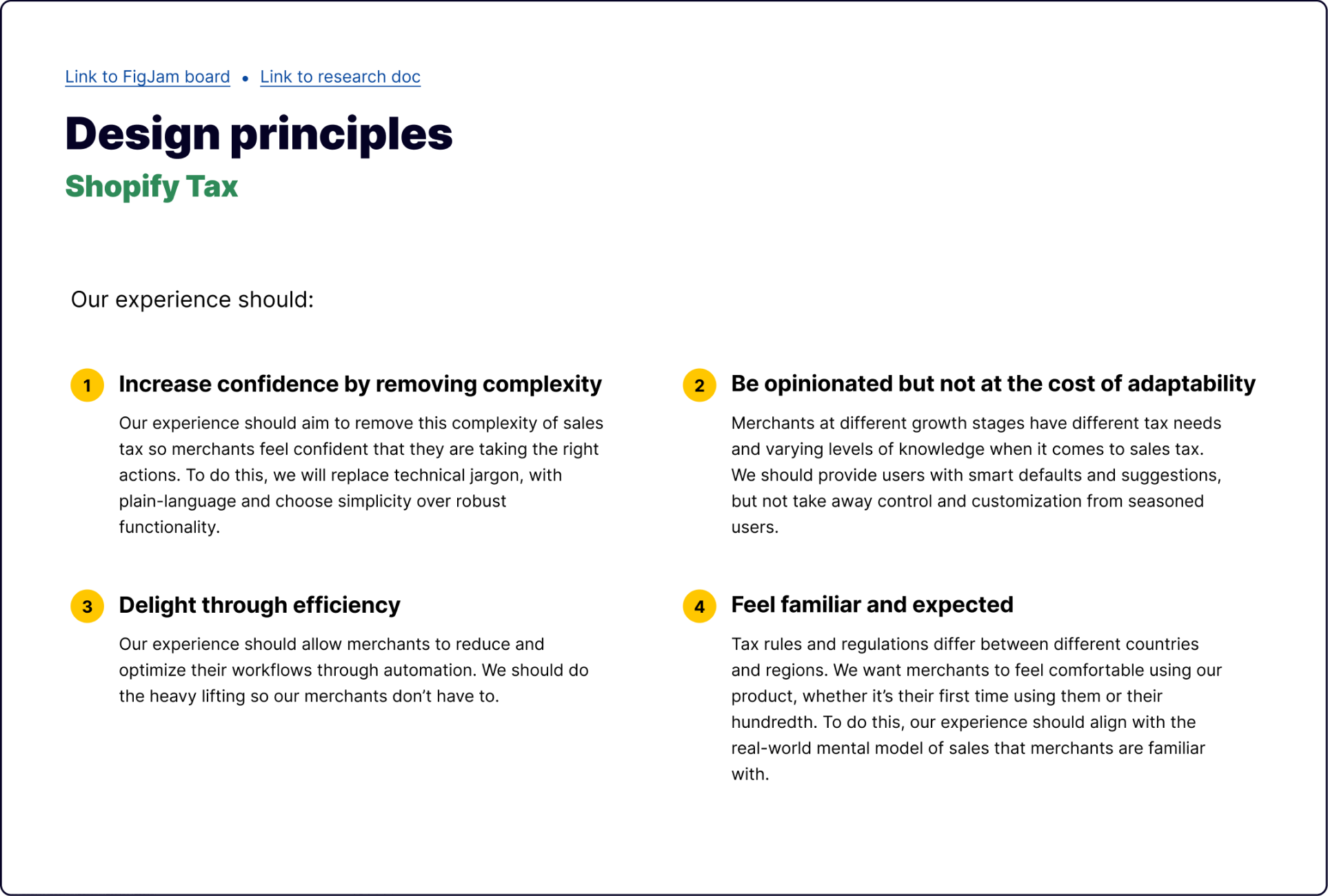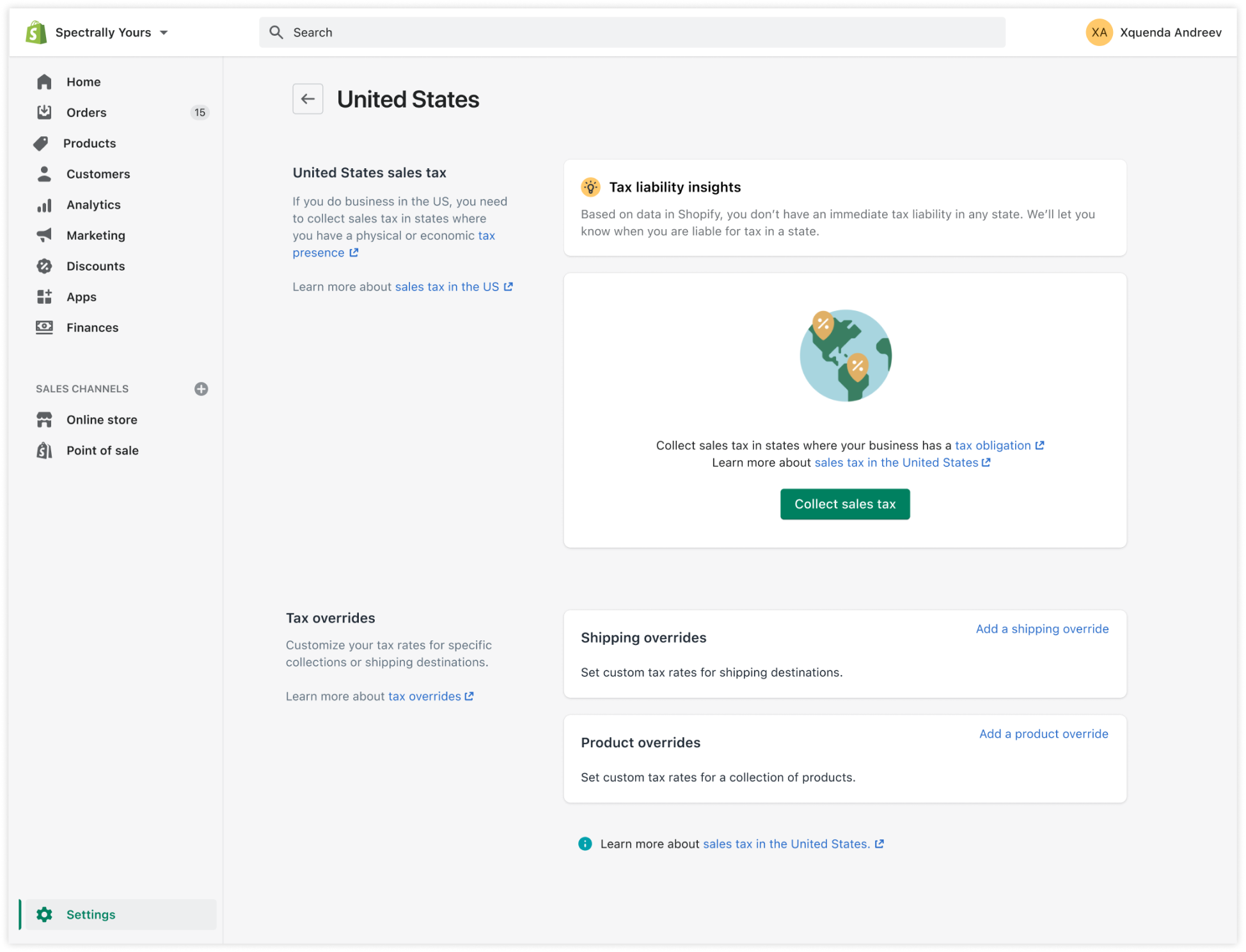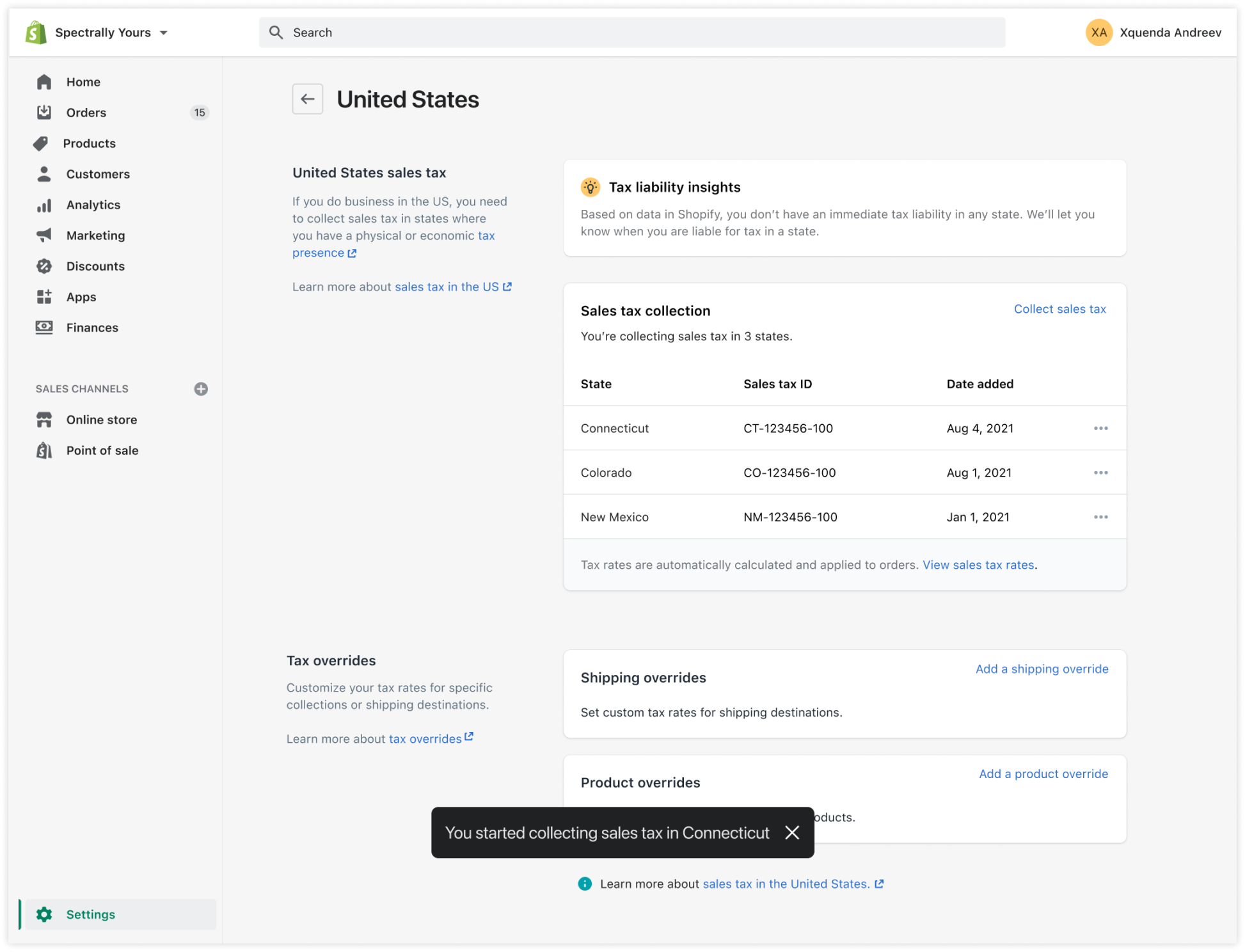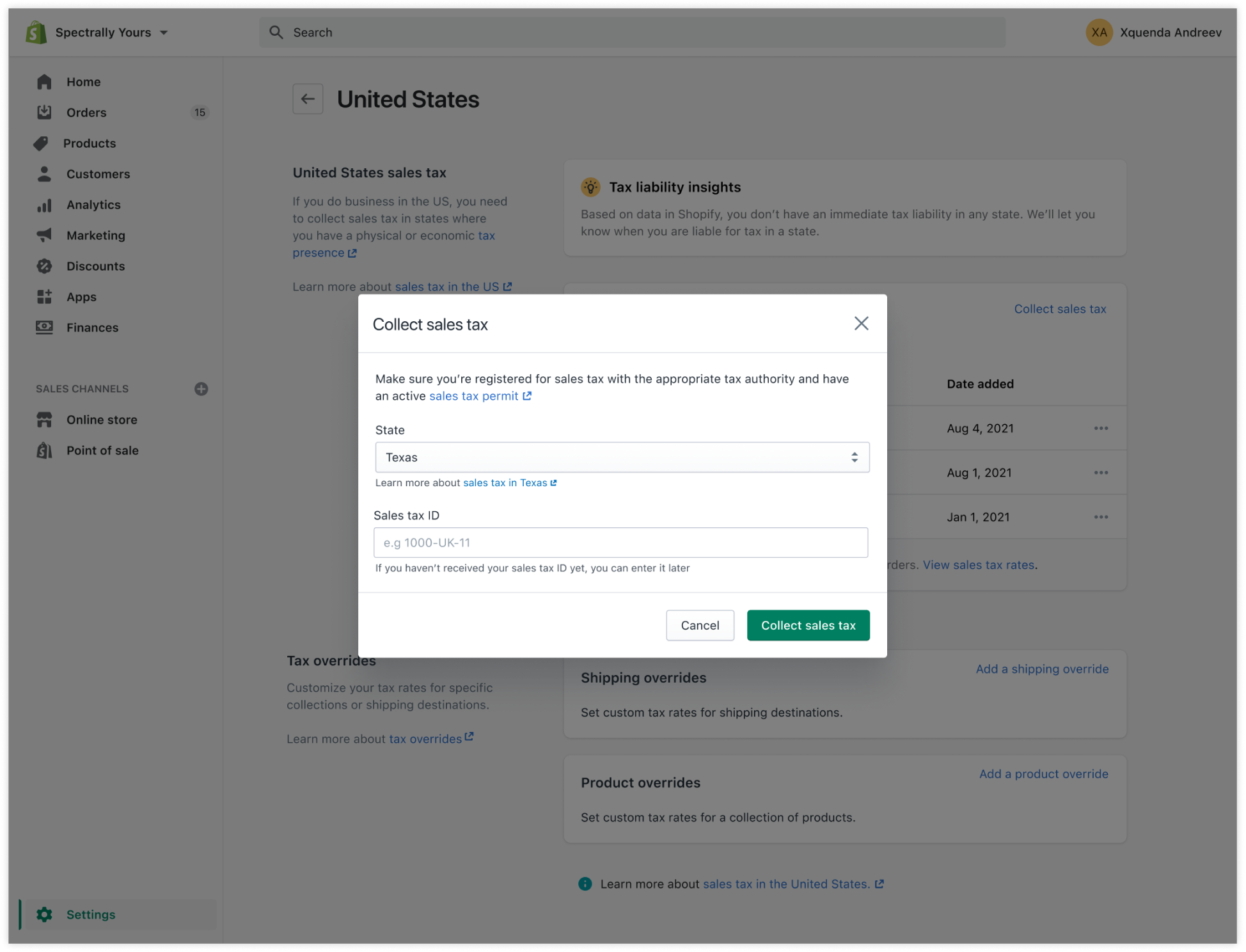- Lead Designer
- Interaction Design
- Visual Design
- Research
Redesigning the sales tax collection experience
The result of the Wayfair vs South Dakota ruling fundamentally changed the way sales tax works in the U.S. I was part of an ambitious project to redesign the Sales Tax Collection experience in Shopify.
The redesign aimed to solve a number of problems and usability issues that had manifested over the years and had been exacerbated by the new Wayfair ruling.
